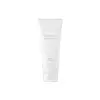What's inside
What's inside
 Key Ingredients
Key Ingredients

 Benefits
Benefits

 Concerns
Concerns

 Ingredients Side-by-side
Ingredients Side-by-side

Water
Skin ConditioningSodium Lauroyl Methyl Isethionate
CleansingGlycerin
HumectantPEG-18 Glyceryl Oleate/Cocoate
EmulsifyingPEG-120 Methyl Glucose Dioleate
EmulsifyingCocamidopropyl Hydroxysultaine
CleansingCocamidopropyl Betaine
CleansingPhenoxyethanol
PreservativeCitrus Sinensis Peel Oil Expressed
PerfumingLimonene
PerfumingDisodium Lauryl Sulfosuccinate
CleansingPanthenol
Skin ConditioningTrisodium Ethylenediamine Disuccinate
Caprylyl Glucoside
CleansingLauryl Glucoside
CleansingMenthol
MaskingSodium Benzoate
MaskingEthylhexylglycerin
Skin ConditioningSaccharum Officinarum Extract
MoisturisingAloe Barbadensis Leaf Juice
Skin ConditioningLactic Acid
BufferingGlycolic Acid
BufferingTocopheryl Acetate
AntioxidantSalicylic Acid
MaskingCamellia Sinensis Leaf Extract
AntimicrobialCitrus Aurantium Dulcis Fruit Extract
MaskingCitrus Limon Fruit Extract
MaskingPyrus Malus Fruit Extract
Skin ConditioningRosmarinus Officinalis Leaf Extract
AntimicrobialTocopherol
AntioxidantCitric Acid
BufferingPotassium Sorbate
PreservativeWater, Sodium Lauroyl Methyl Isethionate, Glycerin, PEG-18 Glyceryl Oleate/Cocoate, PEG-120 Methyl Glucose Dioleate, Cocamidopropyl Hydroxysultaine, Cocamidopropyl Betaine, Phenoxyethanol, Citrus Sinensis Peel Oil Expressed, Limonene, Disodium Lauryl Sulfosuccinate, Panthenol, Trisodium Ethylenediamine Disuccinate, Caprylyl Glucoside, Lauryl Glucoside, Menthol, Sodium Benzoate, Ethylhexylglycerin, Saccharum Officinarum Extract, Aloe Barbadensis Leaf Juice, Lactic Acid, Glycolic Acid, Tocopheryl Acetate, Salicylic Acid, Camellia Sinensis Leaf Extract, Citrus Aurantium Dulcis Fruit Extract, Citrus Limon Fruit Extract, Pyrus Malus Fruit Extract, Rosmarinus Officinalis Leaf Extract, Tocopherol, Citric Acid, Potassium Sorbate
Water
Skin ConditioningSodium Cocoyl Isethionate
CleansingGlycerin
HumectantHydroxypropyl Starch Phosphate
Sodium Methyl Cocoyl Taurate
CleansingPropanediol
SolventPotassium Cocoyl Glycinate
Acrylates Copolymer
Cetearyl Alcohol
EmollientPotassium Cocoate
EmulsifyingSorbitan Olivate
EmulsifyingSalicylic Acid
MaskingGlycol Distearate
EmollientGlyceryl Stearate
EmollientCitric Acid
BufferingCaprylyl Glycol
EmollientButylene Glycol
Humectant1,2-Hexanediol
Skin ConditioningGlyceryl Caprylate
EmollientCentella Asiatica Extract
CleansingDisodium EDTA
Water, Sodium Cocoyl Isethionate, Glycerin, Hydroxypropyl Starch Phosphate, Sodium Methyl Cocoyl Taurate, Propanediol, Potassium Cocoyl Glycinate, Acrylates Copolymer, Cetearyl Alcohol, Potassium Cocoate, Sorbitan Olivate, Salicylic Acid, Glycol Distearate, Glyceryl Stearate, Citric Acid, Caprylyl Glycol, Butylene Glycol, 1,2-Hexanediol, Glyceryl Caprylate, Centella Asiatica Extract, Disodium EDTA
 Reviews
Reviews

Ingredients Explained
These ingredients are found in both products.
Ingredients higher up in an ingredient list are typically present in a larger amount.
Citric Acid is an alpha hydroxy acid (AHA) naturally found in citrus fruits like oranges, lemons, and limes.
Like other AHAs, citric acid can exfoliate skin by breaking down the bonds that hold dead skin cells together. This helps reveal smoother and brighter skin underneath.
However, this exfoliating effect only happens at high concentrations (20%) which can be hard to find in cosmetic products.
Due to this, citric acid is usually included in small amounts as a pH adjuster. This helps keep products slightly more acidic and compatible with skin's natural pH.
In skincare formulas, citric acid can:
While it can provide some skin benefits, research shows lactic acid and glycolic acid are generally more effective and less irritating exfoliants.
Most citric acid used in skincare today is made by fermenting sugars (usually from molasses). This synthetic version is identical to the natural citrus form but easier to stabilize and use in formulations.
Read more about some other popular AHA's here:
Learn more about Citric AcidGlycerin is already naturally found in your skin. It helps moisturize and protect your skin.
A study from 2016 found glycerin to be more effective as a humectant than AHAs and hyaluronic acid.
As a humectant, it helps the skin stay hydrated by pulling moisture to your skin. The low molecular weight of glycerin allows it to pull moisture into the deeper layers of your skin.
Hydrated skin improves your skin barrier; Your skin barrier helps protect against irritants and bacteria.
Glycerin has also been found to have antimicrobial and antiviral properties. Due to these properties, glycerin is often used in wound and burn treatments.
In cosmetics, glycerin is usually derived from plants such as soybean or palm. However, it can also be sourced from animals, such as tallow or animal fat.
This ingredient is organic, colorless, odorless, and non-toxic.
Glycerin is the name for this ingredient in American English. British English uses Glycerol/Glycerine.
Learn more about GlycerinSalicylic Acid (also known as beta hydroxy acid or BHA) is a well-known ingredient for treating skin that struggles with acne and clogged pores. It exfoliates both the skin's surface and deep within the pores to help clear out buildup, control oil, and reduce inflammation.
Unlike AHAs (alpha hydroxy acids), salicylic acid is oil-soluble. This allows it to penetrate into pores which makes it especially effective for treating blackheads and preventing future breakouts.
Salicylic acid is also known for its soothing properties. It has a similar structure to aspirin and can calm inflamed or irritated skin, making it a good option for acne-prone skin that is also sensitive.
Concentrations of 0.5-2% are recognized by the U.S. FDA as an over-the-counter topical acne product.
It can cause irritation and/or dryness if one's skin already has a compromised moisture barrier, so it's best to focus on repairing that before introducing this ingredient into your routine.
While salicylic acid does not increase sun sensitivity, it’s still important to wear sunscreen daily to protect your skin.
If you are looking for the ingredient called BHA or Butylated Hydroxyanisole, click here.
Learn more about Salicylic AcidWater. It's the most common cosmetic ingredient of all. You'll usually see it at the top of ingredient lists, meaning that it makes up the largest part of the product.
So why is it so popular? Water most often acts as a solvent - this means that it helps dissolve other ingredients into the formulation.
You'll also recognize water as that liquid we all need to stay alive. If you see this, drink a glass of water. Stay hydrated!
Learn more about Water